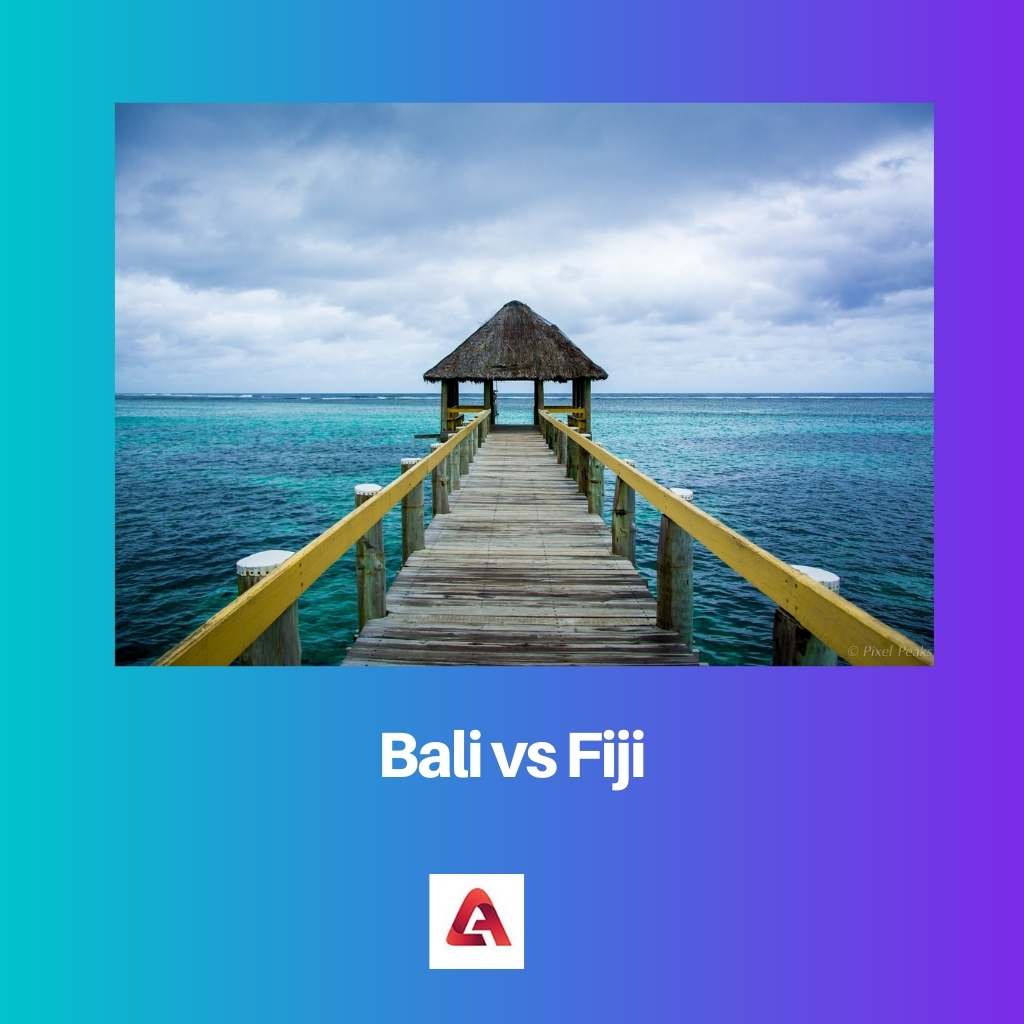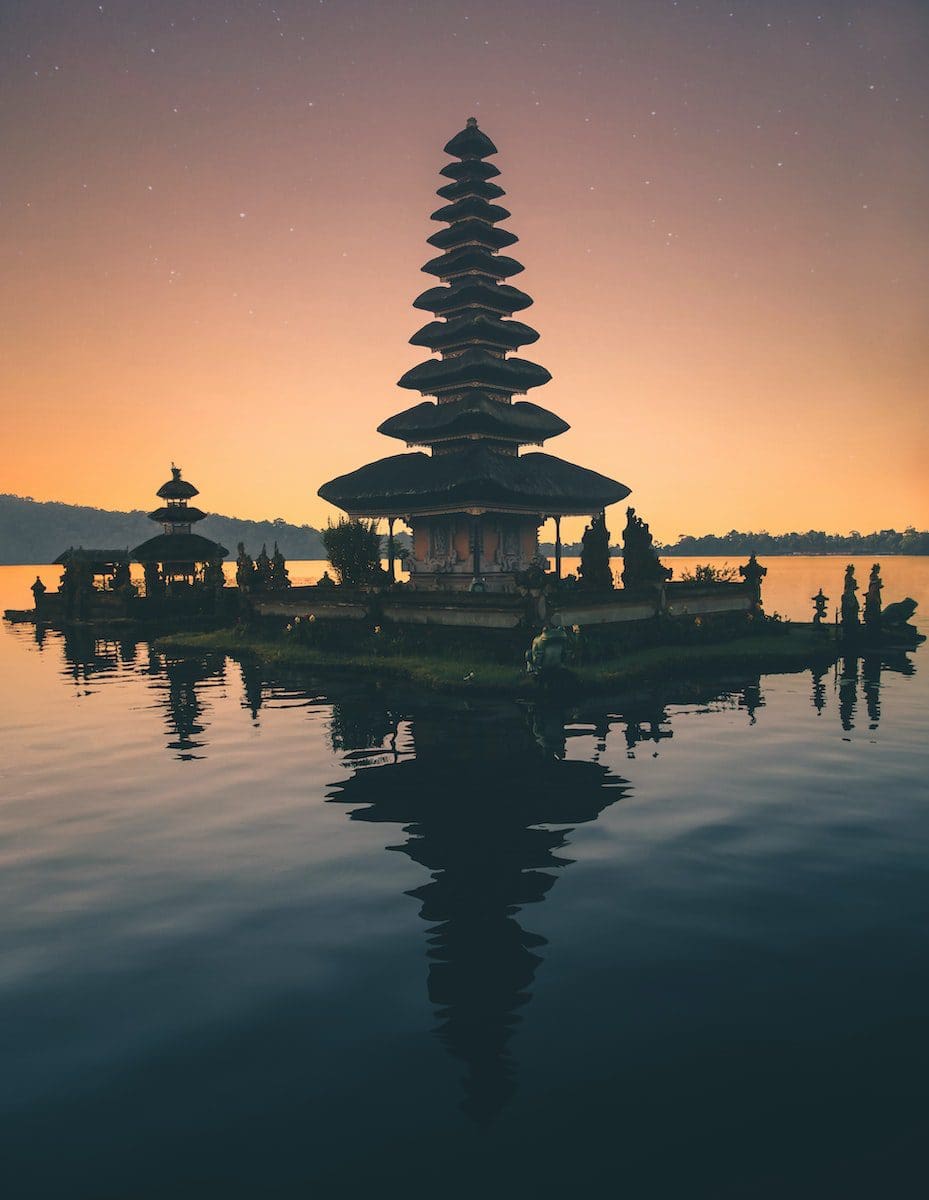Many people are torn between Bali and Fiji when it comes to choosing an island vacation with beautiful beaches and natural surroundings.
As a result, we’ve decided to tell you more about the characteristics and atmosphere of each island, which are both fascinating and distinctive. Nonetheless, they are both excellent vacation spots.
Key Takeaways
- Bali is an Indonesian island known for its beautiful beaches, temples, and rice paddies.
- Fiji is a country in the South Pacific known for its tropical climate, beaches, and coral reefs.
- Bali is more affordable and has a more vibrant nightlife, while Fiji has more luxurious resorts and a more laid-back atmosphere.
Bali vs Fiji
The distinction between Bali and Fiji is that Bali is located in a different geographical region. Bali is north of Perth, while Fiji is north of New Zealand. They even fall under different countries’ jurisdictions; Bali is part of Indonesia, while Fiji is part of Oceania’s Melanesia. Aside from that, they have cultural and linguistic differences.

Bali is a single body of land surrounded by water bodies that are governed by the Indonesian government. It is a peaceful and enjoyable place where you can enjoy the beauty of the sun, hills, land terrain, greenery, and sophisticated cultural essence.
The white sand beaches are a bonus that adds to their heart-warming appeal.
Fiji, on the other hand, is a Pacific Ocean-encircled archipelago of islands. The range of mountains surrounding the island and covered in tropical forest give it a spectacular appearance.
This exciting tradition includes meke, lovo, and kava. Meke denotes a dance, kava denotes a drink, and lovo denotes a meal. The area is exciting as well as appealing.
Comparison Table
| Parameters of comparison | Bali | Fiji |
|---|---|---|
| Location | Located just a few degrees south of the equator | To the north of the tropic of Capricorn, in the Pacific Ocean |
| Staple crop | Wet rice, chili peppers(Bali), tropical corn | Sugar cane, copra ginger, tropical fruits, and vegetables (Fiji) |
| Language | Balinese English | Fijian English, Fiji Hindi |
| Their position with respect to Australia | West | East |
| Cultures | Hinduism and Buddhism have influenced the culture. | Melanesian or Polynesian cultures are influenced by the Pacific. |
What is Bali?
Bali is a few degrees south of the equator and is located north of Perth. Bali is located west of Australia when viewed from that perspective. The Indonesian government is in charge of Bali. Unlike Fiji, Bali is a single island.
They have a tropical climate, which is perfect for tourists. The rainy season lasts from November to March, and the dry season lasts from April to October. It has a warm and humid climate throughout the year.
Balinese Hinduism, one of the major religions, is also part of the place’s rich religious diversity. Islam, Christianity, and Buddhism are the other religions. Balinese English is the primary language spoken in the area.
Family vacations, wedding ceremonies, and honeymoons are all possible at this location. The stunning views of the hills, the white sand beaches, and the peace of the area. The clifftop temples and the breathtaking sunsets provide the ideal views.
Bali is situated at the westernmost tip of the Sunda Islands, halfway between Java and Lombok. It is the most convenient for Western Australians, as it is only three hours away.
The island stretches for 95 miles and is 70 miles wide. Aside from that, white-water rafting, cycling, and surfing are popular activities in the area.

What is Fiji?
Fiji is located in the Pacific Ocean, north of the Tropic of Capricorn. Concerning Australia, Fiji is located east. In contrast to Bali, Fiji is a long stretch of islands connected by a chain of islands.
Only ten percent of the land is inhabited, and only two of the main islands are part of the civilized area of the island. The island is one hour drive from Australia’s east coast.
As a result, the island is easily accessible to Australians. The land is home to a variety of religions, including Christianity, Islam, Hinduism, and Sikhism, among others. Fijian English and Fiji Hindi are the main languages spoken here.
The climate in the area is still ideal for a relaxing vacation. It rains in December and continues through April. From June to October, the cold season begins.
Sugar cane, copra ginger, and tropical fruits and vegetables are among the crops grown in the region, which are staples for the Fijians.
Aside from that, it’s a fantastic vacation spot to enjoy with family and friends, a lovely honeymoon destination, and a fantastic wedding location. The coral reefs, beaches, and green terrain land add to the tour’s beauty and enchantment to the participants.

Main Differences Between Bali and Fiji
- Bali is north of Perth, while Fiji is north of the Tropic of Capricorn in the Pacific Ocean.
- Wet rice, chilli peppers (Bali), and tropical corn are Bali’s staple crops, while sugar cane, copra ginger, and tropical fruits and vegetables (Fiji) are Fiji’s.
- Concerning Australia, Bali is to the west, while Fiji is to the east.
- In Bali, Balinese English is spoken, and in Fiji, Fijian English and Fiji Hindi are spoken.
- Hinduism and Buddhism have influenced Balinese culture, while the Pacific has influenced Melanesians and Polynesians in Fiji.

- https://journals.sagepub.com/doi/abs/10.5367/000000004323142425
- https://www.sciencedirect.com/science/article/pii/S0264410X17313634

The article provides an impressive analysis of the characteristics, atmosphere, and main differences between Bali and Fiji, making it a valuable resource for travelers.
The article provides valuable information about the characteristics and atmosphere of both Bali and Fiji. It makes choosing a vacation spot much easier.
The details about Bali and Fiji’s cultural influences are intriguing. The mention of key activities, including family vacations and wedding ceremonies, adds value to the article.
I agree, the article provides a rich understanding of the cultural aspects and tourist attractions of both locations.
The comparison between Bali and Fiji is highly informative. The cultural and linguistic differences between these two islands are fascinating.
I agree, the write-up gives a clear understanding of the key takeaways and the comparison table is a great summary.
The details about Bali and Fiji’s staple crops, languages, and culture are well-researched and well-explained.
The description of the staple crops and their geographical locations helps us understand the distinctiveness of the two regions.
Bali and Fiji are both excellent locations for vacations, offering fun for everyone from singles to families with children.
The comparison of Bali and Fiji with respect to location, staple crops, languages, and cultures is an excellent way to distinguish between the two captivating vacation spots.
I found the information about the geographical and cultural differences quite intriguing. The comparison table makes it easy to identify the distinctions.
The details about the religious diversity and geographic features of Bali and Fiji are presented brilliantly, making it an engaging read.
The article provides a comprehensive overview of the characteristics and key takeaways of Bali and Fiji, making it easier to decide which island to visit.